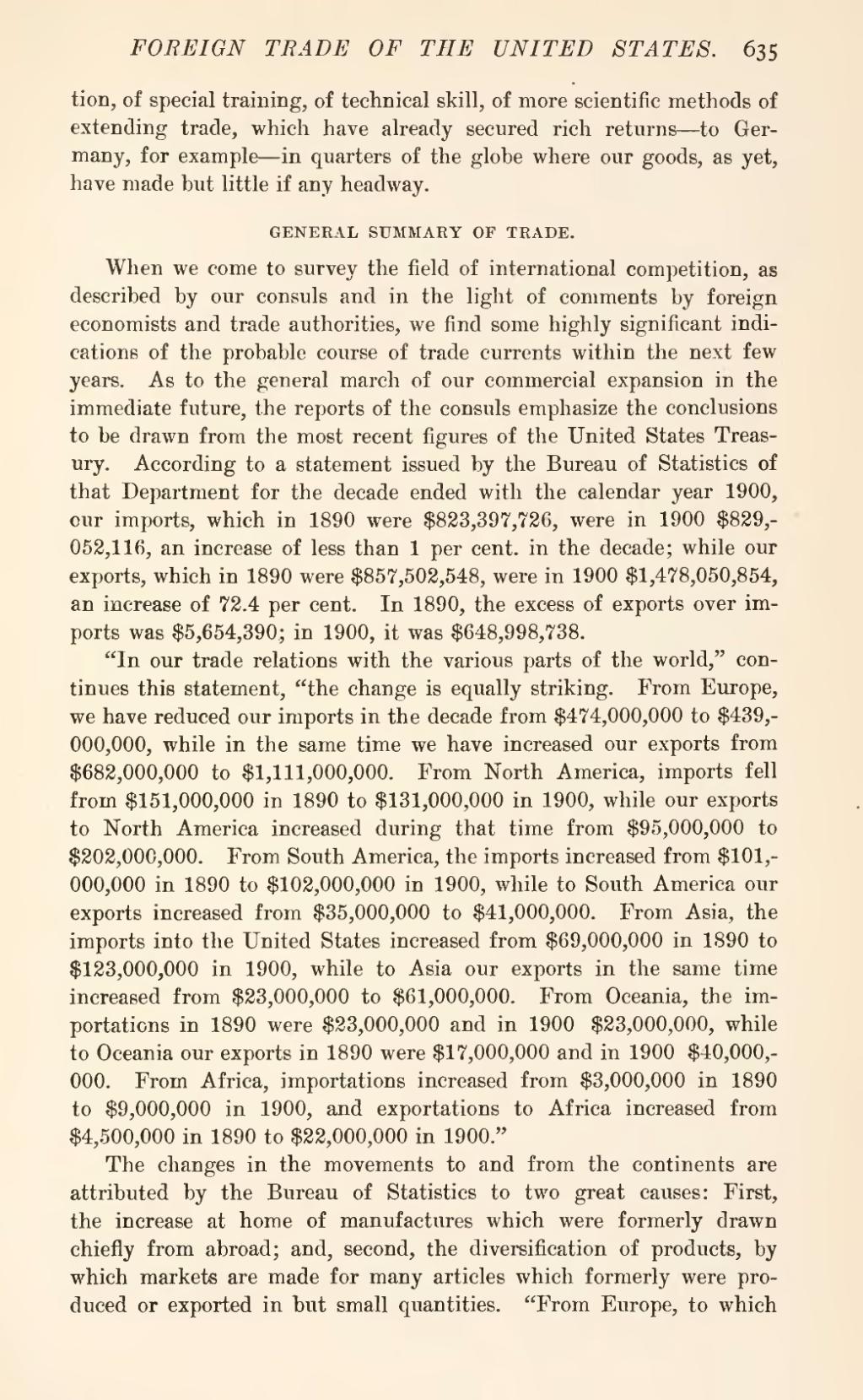tion, of special training, of technical skill, of more scientific methods of extending trade, which have already secured rich returns—to Germany, for example—in quarters of the globe where our goods, as yet, have made but little if any headway.
GENERAL SUMMARY OF TRADE.
When we come to survey the field of international competition, as described by our consuls and in the light of comments by foreign economists and trade authorities, we find some highly significant indications of the probable course of trade currents within the next few years. As to the general march of our commercial expansion in the immediate future, the reports of the consuls emphasize the conclusions to be drawn from the most recent figures of the United States Treasury. According to a statement issued by the Bureau of Statistics of that Department for the decade ended with the calendar year 1900, our imports, which in 1890 were $823,397,726, were in 1900 $829,052,116, an increase of less than 1 per cent, in the decade; while our exports, which in 1890 were $857,502,548, were in 1900 $1,478,050,854, an increase of 72.4 per cent. In 1890, the excess of exports over imports was $5,654,390; in 1900, it was $648,998,738.
"In our trade relations with the various parts of the world," continues this statement, "the change is equally striking. From Europe, we have reduced our imports in the decade from $474,000,000 to $439,000,000, while in the same time we have increased our exports from $682,000,000 to $1,111,000,000. From North America, imports fell from $151,000,000 in 1890 to $131,000,000 in 1900, while our exports to North America increased during that time from $95,000,000 to $202,000,000. From South America, the imports increased from $101,000,000 in 1890 to $102,000,000 in 1900, while to South America our exports increased from $35,000,000 to $41,000,000. From Asia, the imports into the United States increased from $69,000,000 in 1890 to $123,000,000 in 1900, while to Asia our exports in the same time increased from $23,000,000 to $61,000,000. From Oceania, the importations in 1890 were $23,000,000 and in 1900 $23,000,000, while to Oceania our exports in 1890 were $17,000,000 and in 1900 $40,000,000. From Africa, importations increased from $3,000,000 in 1890 to $9,000,000 in 1900, and exportations to Africa increased from $4,500,000 in 1890 to $22,000,000 in 1900."
The changes in the movements to and from the continents are attributed by the Bureau of Statistics to two great causes: First, the increase at home of manufactures which were formerly drawn chiefly from abroad; and, second, the diversification of products, by which markets are made for many articles which formerly were produced or exported in but small quantities. "From Europe, to which
